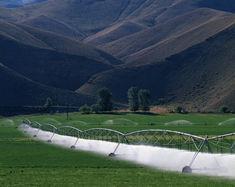
New irrigation technologies from the US Agricultural Research Service can reportedly match Bluetooth devices to large-scale irrigation systems, to boost overall efficiency.
Thanks to Bluetooth and a wireless network of small soil-moisture and temperature sensors, a grower can now dictate a field’s exact water needs. Signals sent to an irrigation station tell individual sprinklers just how much water to emit and where.
This system, the ultimate in high-tech precision irrigation, was built around the concept that most agricultural fields are filled with environmental nuance. Because of factors like soil type, subsurface conditions, topography, drainage issues, and disease problems, a piece of farmland that looks uniform on the surface is, in reality, a complicated, irregular patchwork of smaller plots, each defined by its own set of problems.
That’s why an automated irrigation system like this one-which doesn’t dole out a drop of water anywhere unless told to-is so critical to efforts to conserve the world’s water and fertiliser supplies.
“Right now, most growers, for the most part, are only able to manage their fields with just one soil type or problem in mind,” says the ARS’s Phillip Evans, an agricultural engineer. “They may be irrigating for sandy soil, which requires more water, when in fact they have clay soil too.”
Because that clay soil retains moisture, an amount of water that is perfect for the larger grained sandy soil would likely be wasted in runoff from a clay soil and could lead to drainage and plant-disease problems.